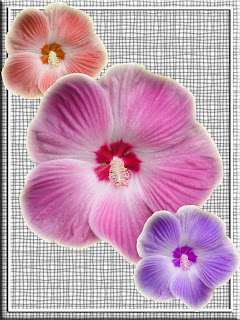You have already learned many techniques in Photoshop. Next week you will have a Quiz on the commands we have learned in class - you have a handout mentioning these keyboard shortcuts and can add the few others learned in class and found in this blog
(Quiz: Tuesday, November 22, 2011).You learned how to create a New Document by going to
File > New or simply pressing the Command and N keys on your keyboard. You also learned how to create a customized brush of your choice. As long as you have a layer of something on a transparent background, you can create a brush by going to
Edit > Define Brush Preset.
You also learned how to select a Style from the "Styles Palette." First, making sure this panel is visible and then making sure your Background layer is not locked (double-clicking it to unlock) or simply duplicating this layer. Then selecting a Style of your choice. Remember that you can add more Styles by going to the tiny black triangle and selecting one or more of the options shown (then clicking Append).
You must also remember how to add "frames" using the
Rectangular Marquee Tool. Once your frame is showing (once you make the selection on your image of where you want your frame) you go go
Edit > Stroke. Change the color, enter the number of pixels and enter a few other options. Remember that it is a good idea to create your frame on a separate layer, so that you can add
Blending Options to your frame. To add Blending Options simply double-click the right side of your layer. You can also do this with Text, once we learn how to add text in Photoshop (next week). Or you can do this with any layer created of an image (flower, animal, person, etc.) With Blending Options you can add shadows, inner or outer glows, bevel and emboss, etc. Remember to right-click the option too to change the sliders and find even more options.
I must be able to find the exercises we did in class in the Server, under your name in the Second Quarter Folder. You can practice the techniques learned some more. On November 8 we will work on the Nine of Me exercise. Please check the left-side of the Blackboard to make sure you have the exercises mentioned are already in the server for me to grade. Also, your Quiz exercise must be there.
If you want to work on other Photoshop Exercises, Connect to the Server, go to iLife06-1 > Photoshop > 2nd Quarter Exercises and work on Exercise No. 3 or 4.


